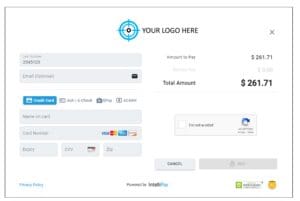Today, we’ll delve into four ways local governments can make payment acceptance more efficient. I think we all can agree that outdated payment systems can cause many headaches for local governments and their constituents. With so many responsibilities to manage, finance teams often need help keeping up with the payment processing demands.
But there is a solution: moving away from siloed methods and disconnected systems can improve payment efficiency and create a more streamlined experience for everyone involved. If you’re ready to improve your payments experience for constituents and treasury departments, check out these four ways you can improve payment efficiency:
Contents
Build a Friction-Less Payment Experience
Recent research has shown that six out of ten agency finance teams rely on manual reconciliation, spending thirty (30%) percent or more of their time in siloed payment processes and platforms. Manual reconciliation wastes time and limited local government resources, often leading to a disjointed external experience for constituents. Local governments need to keep up with the times and offer modern payment options to their constituents use in their daily interactions. It’s time to embrace new technologies and make payment processing more convenient and accessible.
Offer Digital Payments Improve Payments Experience
A recent survey of a thousand (1000) consumers found that seventy-four percent (74%) prefer digital payment methods to traditional forms. In addition, sixty-five percent (65%) of those surveyed believe digital payments are more secure than cash, check, or money order.
Consumers, your constituents, expect speed, choice, and convenience when they come to your website(s) to make payments. Payment processor cloud-hosted online payment pages; lightbox payment pop-ups can be easily added to existing web pages with little involvement from agency personnel.
Pages, lightboxes, and portals provide the convenient and easy-to-navigate payment experience your constituents expect while driving the adoption of digital payments. While the front end provides a familiar payment experience, the back end updates payment data in existing systems. Using a single platform, you can reduce manual reconciliations and save time for other priorities.

Example of a Lightbox pop up
Offer Recurring Payment and Automatic Payment Options to your Constituents
More than forty percent (40%) of U.S. households use recurring payments to pay their monthly bills. Recurring payments are contactless and convenient and allow a choice of payment method— credit and debit cards, echecks, etc. Your constituents want the option to make payments automatically, so be sure to major credit and debit cards and echecks as payment options.
Expand Your Payment Options
More than eighty percent (80%) of consumers want to make payments on their phone or online platform. However, outdated, slow, and complicated interfaces add friction and likely will increase payment-related in-person or over-the-phone interactions. Requiring more staff time, not less. Adding major credit and debit cards, echecks, and ACH options is a start, but you may consider more financially inclusive options like ecash for the un or underbanked.

Consolidate Payment Platforms
Over time as payment methods evolved and new options became available, government agencies often added a vendor and platform to accommodate the new offering. Unfortunately, for some agencies, the result was multiple platforms with different reporting and data formats, each requiring a separate login and a process where the data is downloaded and standardized for reporting – all very time-consuming.
As you expand your payment offerings to your constituents, consider consolidating payment platforms and vendors. Unfortunately, many local governments find themselves with a patchwork of systems built over time that are outdated and hard to use. Not only do outdated systems reduce staff efficiency creating more work for reconciliation, but they also interject more opportunities for human error, increase the number and frequency of customer-service questions, and require the maintenance of multiple systems and vendor relationships. Additionally, Outdated systems are ripe for cybersecurity breaches, with nearly forty percent (40%) of breaches being traced back to human error.
Consider An All-In-One Solution
A word of caution. Many vendors will promise an all-in-one solution, but you must dig deep to understand if it suits your local needs. There are several well-known on-size-fits-all systems on the market. These well-known systems were designed with larger governments and government agencies in mind and often combined through acquisitions. Your government agency may not need all the whistles and bells these mega-sized solutions offer, and while you may not be able to turn them off or exclude them, you are still paying for something you don’t need.
Likewise, these larger systems take longer to implement and may require re-formatting of existing data to meet their requirements. Even if these larger providers offer customization, the expense and time to execute may be prohibitive. Finally, these larger companies make more money from their largest customers. Hence these larger customers get priority service. Smaller agencies might have to settle for a lower service tier or longer wait times.
There are government merchant services providers who have been in the public sector for decades and will customize their solutions to fit your needs and how you work. Their front end payment options are displayed in clean, easy-to-use customer interfaces and back-end systems that streamline reporting and eliminate manual processes.
IntelliPay the sponsor of Four Ways Local Governments Can Improve Payments is a merchant services and payment processing provider who is large enough to handle all your payment requirements but small enough to give you the world-class service you deserve. In addition, they provide a dedicated account manager and work with your team to optimize the solution. For more information, visit www.intellipay.com/government-payments or call 855-872-6632, option 2, for a non-obligation consultation with one of their payment experts.


